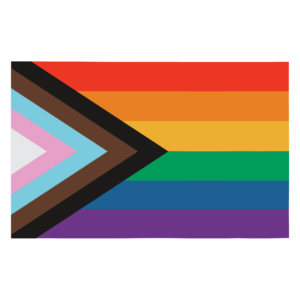Table of Contents
An inclusive and representative environment is important for kids and families. According to GLSEN’s National School Climate Survey, students who identify as LGBTQIA are more likely to feel unsafe in school, have more absences, experience harassment, avoid extracurricular activities, and change schools due to feeling unsafe. It doesn’t have to be this way.
During, and beyond the bounds of LGBTQIA+ Pride Month, ensuring everyone’s voice is heard and valued matters.
Cora Stammen, Content Development Intern, shares history, resources, and lessons about the power of pride in education.
History of Pride
The history of the LGBTQIA+ Pride Month holds value deeper than many of us know. Dating back to the early 1900s, the dispute for equality within LGBTQIA+ groups began. Organizations such as the Society for Human Rights were formed in hopes of creating safe and positive spaces for gay and lesbian communities to protest discrimination.
Following World War ll, members of the LGBTQIA+ community started becoming vocal about their need for inclusion and acceptance. Although some progress was made, gay, lesbian, bisexual, and transgender citizens were still denied basic civil rights. This continued until one monumental night in June of 1969 in New York City.
Procedures within the NYPD included the occasional raid of bars and restaurants where LGBTQIA+ members would gather. On the night of June 28, 1969, the police raided the Stonewall Inn resulting in the violent removal of employees and customers from the bar. As a result, people started fighting back.
This marked the beginning of six long days of protests outside the Stone Wall Inn and around the neighborhood. When the Stonewall Riots ended on July 2, 1969, gay rights were no longer swept under the rug, and instead, shone brightly on front pages worldwide.
Pride Begins
Just one year after the Stonewall Riots, activists commemorated the uprising. The first gay pride parade occurred on June 28, 1970. With celebrations continuing in years to follow, June was named Gay and Lesbian Pride Month in 2000 by Bill Clinton and later changed to Lesbian, Gay, Bisexual, and Transgender Pride Month in 2009 by Barack Obama.
Today we celebrate this month to recognize those who fought for equal rights and continue to observe love and inclusion everywhere.
How Pride Connects With Education
Pride gives visibility to the LGBTQIA+ community, and staff, families or students who might otherwise feel different. All members of a school community should feel supported and comfortable in their learning environment.
In addition, acknowledging Pride and learning about it can help create a space to eliminate and decrease prejudice and bullying.
Tips for Incorporating Pride:
- Study important LGBTQIA+ members in history such as Sylvia River or Virginia Woolf and other influential activists.
- Offer literature that features LGBTQIA+ members, and that represent diverse representations families. Here’s a great place to start!
- Lastly, celebrate all year round! Ensure that your community remembers the struggles LGBTQIA+ members. When we empathize with multiple communities, it helps us reflect and think about ways to support everyone.
The ideas of Pride – representation, LGBTQIA allyship, celebrating your best authentic self, listening to and valuing the stories of everyone, love, and pride – are themes we can borrow all year long.
Resources for Families and Schools
Here are some organizations that support LGBTQIA students and families:

The post The Power of Pride in Education appeared first on Possip.
No comments:
Post a Comment